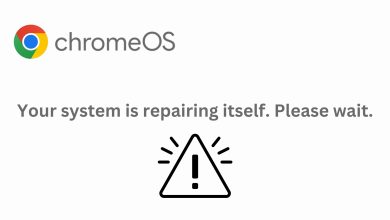How to Turn Off Caps Lock on Chromebook in 2 Easy Steps
- Chromebooks feature unique keyboard layouts, including the Launcher key instead of a traditional Caps Lock key, which is activated or deactivated using Alt + Launcher key.
- If Caps Lock isn't working, check keyboard shortcut settings, restart the device, or ensure notifications are enabled.
- Chromebook keyboard settings can be customized, including remapping the Launcher key to different functions like Caps Lock, enhancing user experience and productivity.
Chromebooks offer a straightforward, web-based operating system that provides a distinct computing experience. While their keyboards function similarly to those of other operating systems, their layout is slightly different. Designed with simplicity and efficiency in mind, Chromebook keyboards include several unique keys that set them apart from traditional PC and Mac keyboards.
Turning off Caps Lock on a Chromebook may initially seem confusing, especially if you’re accustomed to the traditional keyboard layouts of Windows or Mac devices. Whether you’ve accidentally activated Caps Lock or need to toggle it frequently, these instructions will empower you to manage text input more effectively.
Table of Contents
How do keyboards work on Chromebooks?

Keyboards on Chromebooks function much like those on other systems, such as Windows or macOS, though with a few distinct differences. The layout is tailored to enhance Chrome OS‘s web-centric features, enabling smooth interaction with Google’s suite of apps and the broader internet.
Chromebooks, much like macOS, include several command keys designed for executing specialized functions that enhance productivity and elevate the user experience. These keys are optimized for actions such as web searches and direct access to various Chrome OS features, thus streamlining your workflow.
↪ How does Caps Lock work on Chromebooks?
Chromebooks do not feature a traditional Caps Lock key. Instead, this function is replaced by a Search or Launcher key, which allows users to quickly search for apps or internet content right from the desktop.
Understanding how Caps Lock operates on a Chromebook is crucial for efficient typing. Instead of a dedicated Caps Lock key, Chromebooks utilize the Launcher key in combination with the Alt key to toggle Caps Lock on and off.
This alternative method reduces the likelihood of accidental activation, which is often encountered with standard keyboard layouts. Additionally, Chromebooks include numerous other convenient shortcuts and key combinations that slightly differ from other operating systems.
How to use Caps Lock on a Chromebook?
Using Caps Lock on a Chromebook differs from the traditional process found on Windows or Mac computers, mainly because there is no dedicated Caps Lock key. Instead, Chromebooks utilize a Launcher key that serves multiple purposes, including enabling Caps Lock.
Here’s how to activate and deactivate Caps Lock:
1. How to activate Caps Lock:
- Press and hold the Alt key, then tap the Launcher key (often shown as a magnifying glass or circle).

Press Alt + Launcher key - A notification will appear on the Shelf (a circle with an arrow) indicating that Caps Lock is activated.

Caps Lock will appear
2. How to deactivate Caps Lock:
- Repeat the same key combination by holding the Alt key and pressing the Launcher key.

Press Alt + Launcher key - The notification on the Shelf that appeared when activating Caps Lock will disappear, confirming that it has been turned off.

Caps Lock icon will disappear
3. Troubleshooting Caps Lock issues

Occasionally, you might encounter minor issues when using Caps Lock. Here are some troubleshooting tips:
- Caps Lock is not working: Ensure your keyboard shortcuts are correctly configured in your Chromebook settings. Customize these settings under Settings > Device > Keyboard.
- Persistent Caps Lock: If Caps Lock fails to deactivate, try restarting your Chromebook to reset system functions.
- Notifications not showing: If Caps Lock notifications are not visible, check your notification settings to ensure they are enabled.
Navigating with Chromebook keyboard shortcuts

Navigating your Chromebook is simplified when you utilize the right keyboard shortcuts. These shortcuts enhance efficiency, allowing you to manage your workflow without continuously relying on the mouse.
Essential navigational shortcuts include using the Alt key along with the arrow keys to move backward and forward in web browsers. You can refresh pages, open new tabs, or switch between applications quickly with straightforward key combinations.
The “Everything Button,” initially designed to replace the Caps Lock key, provides versatile functionality, allowing quick searches and app access, thus improving how you interact with your device.
➜ Customizing Keyboard Settings
Chromebooks offer the flexibility to customize each key’s behavior, allowing you to tailor the keyboard according to your preferences. Here’s how you can remap keys:
↪ Changing the functionality of the Search Key
If you find the default setting of the Search key as an “Everything Button” less helpful, you can modify it to function as a Caps Lock, Ctrl, Alt, or even a backspace key. To do this:
- Click the “Device” icon in the display’s left corner.

Click the Device icon - Select “Settings.”

Choose Settings - Then, click on “Keyboard Settings.”

Click on Keyboard Settings - Locate the “Search” key in the list and choose your preferred functionality from the dropdown menu.

Click the Search Key
↪ Adjusting other key behaviors
Similar to the Search key, you can adjust functionalities of other keys such as the Ctrl, Alt, and Arrow keys. Follow the same steps above, choosing different keys to customize. This flexibility allows you to configure your Chromebook for optimal usability tailored to your personal or professional needs.
 Reviewed by
Reviewed by 




